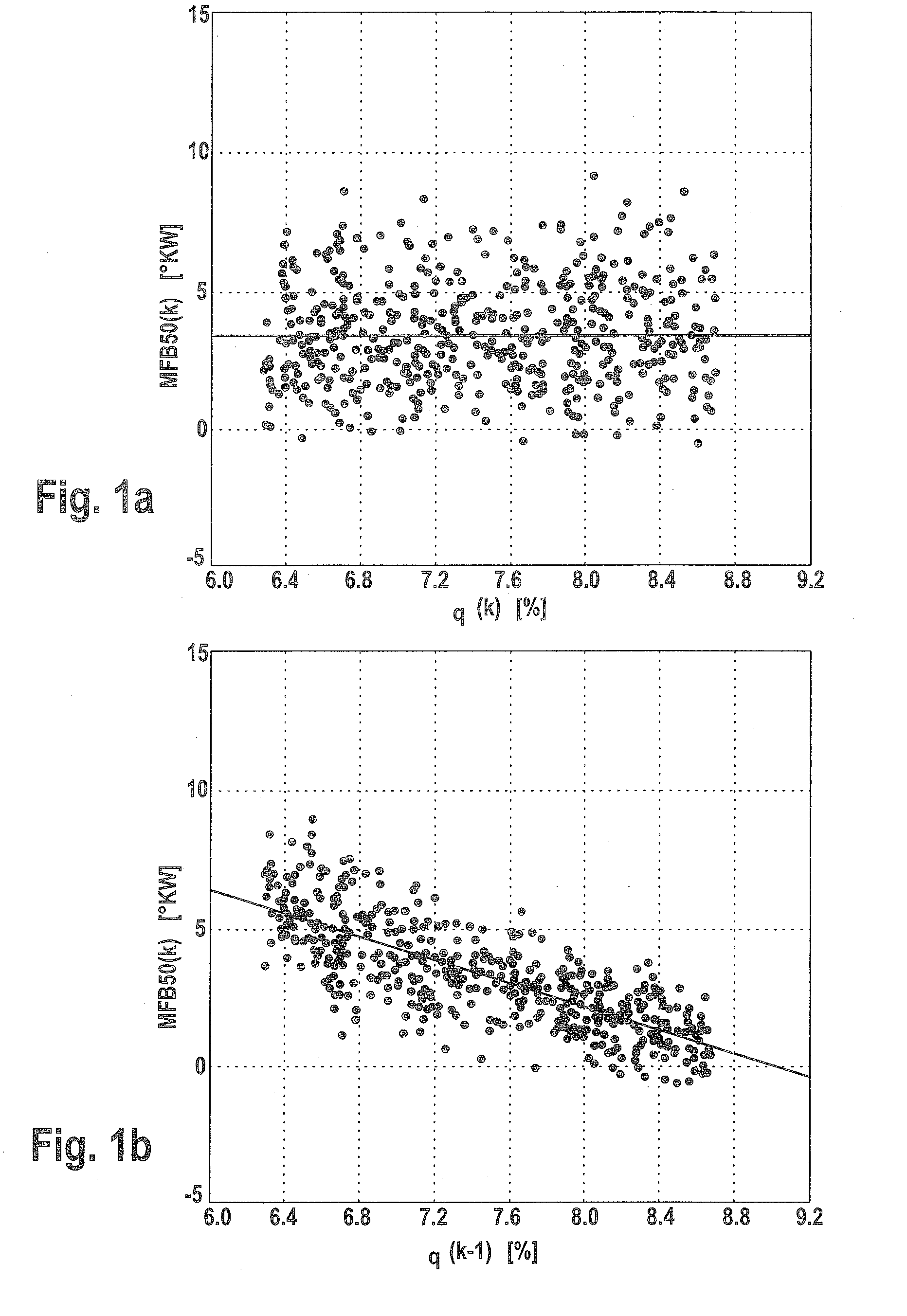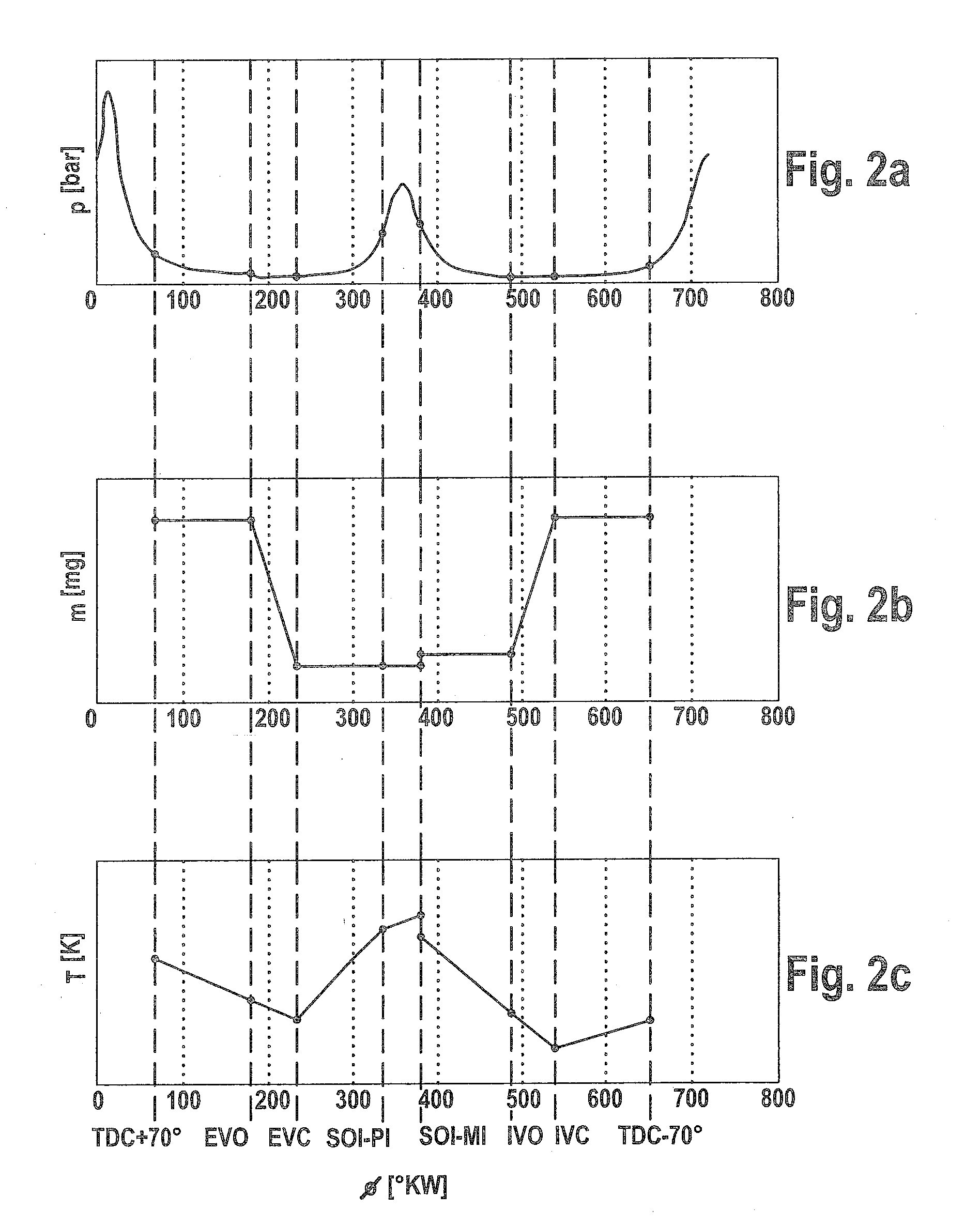Method for regulating an internal combustion engine, computer program and control unit
a technology of internal combustion engine and computer program, applied in the direction of electrical control, process and machine control, etc., can solve the problems of comparatively low residual gas compatibility, difficult to regulate dynamic engine operation, and large challenge in dynamic engine operation regulation, so as to eliminate statistical variations in combustion position features, reduce the effect of sensitiveness
- Summary
- Abstract
- Description
- Claims
- Application Information
AI Technical Summary
Benefits of technology
Problems solved by technology
Method used
Image
Examples
Embodiment Construction
[0042]Exemplary embodiments of a method and control unit according to the present invention will be explained with reference to the accompanying drawings. Unless stated otherwise, identical or functionally identical elements have been provided with the same reference numerals throughout the figures of the drawings.
[0043]The present invention will be explained with reference to a gasoline engine that is operable selectively or in dependence on operating point in CAI operation and in SI operation. It is, however, generally applicable to engines that are operable at least in a part-load range in an operating mode with auto-ignition, that is to say, for example, that the present invention is also applicable to diesel engines.
[0044]In accordance with one exemplary embodiment, first the desired value of the combustion position, which is a feature (combustion position feature) of the combustion process, is determined and is then fed as a reference variable to a predictive closed-loop contr...
PUM
 Login to View More
Login to View More Abstract
Description
Claims
Application Information
 Login to View More
Login to View More - R&D
- Intellectual Property
- Life Sciences
- Materials
- Tech Scout
- Unparalleled Data Quality
- Higher Quality Content
- 60% Fewer Hallucinations
Browse by: Latest US Patents, China's latest patents, Technical Efficacy Thesaurus, Application Domain, Technology Topic, Popular Technical Reports.
© 2025 PatSnap. All rights reserved.Legal|Privacy policy|Modern Slavery Act Transparency Statement|Sitemap|About US| Contact US: help@patsnap.com



